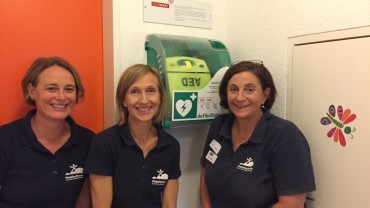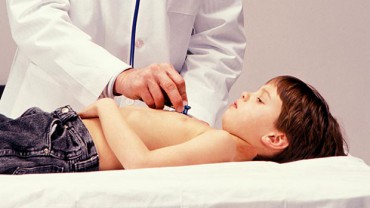
The very first ‘European Restart a Heart Day’ – to teach members of the public how to help restart the heart of someone who has suffered a cardiac arrest will be held this autumn, organised by the European Resuscitation Council (ERC). The initiative, which takes place on October 16, is aimed particularly at Europe’s younger people, aims to improve the very low numbers of people surviving out-of-hospital cardiac arrests. On the day, Members of European Parliament will be taught how to resuscitate a victim and use an automated external defibrillator (AED). A poster campaign and flyers will be distributed in different languages, and events will be held across multiple European countries with the support of their national resuscitation organisation.
Every year, around 350,000 Europeans suffer an out-of-hospital cardiac arrest (OHCA). OHCA occur anywhere, for example in the street, at work, or while exercising or doing other strenuous activity. The vast majority happen at home. Currently, less than 1 in 10 of these patients survive. Bystander cardiopulmonary resuscitation (CPR) by lay people increases survival by 2-3 times, however, today it is delivered in only 1 in 5 out-of-hospital cardiac arrest. Increasing this rate may save 100,000 lives in Europe per year. “Unfortunately, only a small minority of cardiac arrest victims receive this vital help in time to save their life,” says Professor Maaret Castrén, Karolinska Institutet, Sweden, and chair of the ERC.
More people learning how to restart a heart could save 100,000 lives per year across Europe, says the European Resuscitation Council
Bystander CPR rates vary widely across Europe, with Andalusia in Spain as low as 12%, Germany 15%, through to very high rates in the Netherlands (61%) and Sweden (59%).The actual survival rate varies with the setting, with some countries (generally those in Eastern Europe) having survival as low as 6%, whereas countries with an excellent record in bystander CPR such as the Netherlands and Norway see survival rates as high as 40%. “If we could improve rates of bystander CPR in Europe to the levels seen in these best-performing nations, then around 100,000 lives could be saved each year across Europe,” says Prof Castrén. “We are certain that if more people were trained (e.g. in key public places such as airports, gyms, hotels etc.) and if more AED’s were placed on strategic points, 50% of the deaths by cardiac arrest could effectively be prevented,” she adds.
To put these numbers in context, the estimate of 350,000 OHCA deaths is equivalent to 1,000 deaths per day every day of the year across Europe: 2 full jumbo jets crashing with no survivors each and every day. By comparison, 28,000 people die across Europe each year in road accidents, but despite this the figure invested in road and car safety each year is much higher than that invested in CPR.
The ERC’s Restart a Heart campaign comes following a European Parliament declaration in June 2012 calling on Member States to establish a European Cardiac Arrest Awareness Week aimed at improving awareness and education of the public, doctors and other health care workers.
By performing CPR you can do nothing wrong,
the only thing that can be wrong is doing nothing.
In addition to children aged 12-16 years and young adults, the European Restart a Heart Day will also educate teachers, parents, opinion leaders and politicians about how to give this vital assistance. The ERC will mobilise the support of all national resuscitation organisations in Europe to help promote the campaign, which will include posters, flyers, tips on CPR and event ideas for schools, youth organisations, and sports clubs.
There will also be a multilingual website packed with useful information and explaining how to deliver CPR correctly, and a video demonstration, a Twitter hashtag and a special Facebook page to share experiences and stories. Politicians in the European Parliament in Brussels will also be treated to a special resuscitation demonstration and training session on European Restart a Heart Day.
“CPR is easier than most people think and saves lives,” adds Professor Castrén. “People are understandably nervous about doing CPR but our campaign will show that it is a straightforward procedure that can be performed by most people. Members of the general public really have the power and ability to save lives in these circumstances. Even a modest increase in the proportion of the public doing CPR in this scenario could save many lives.”





Leave us a reply